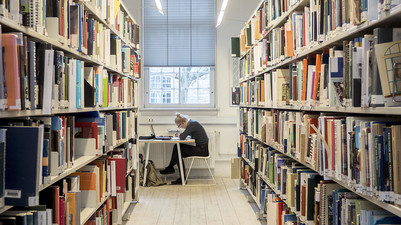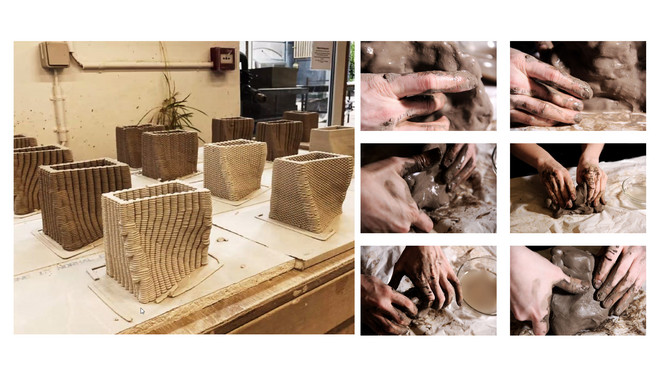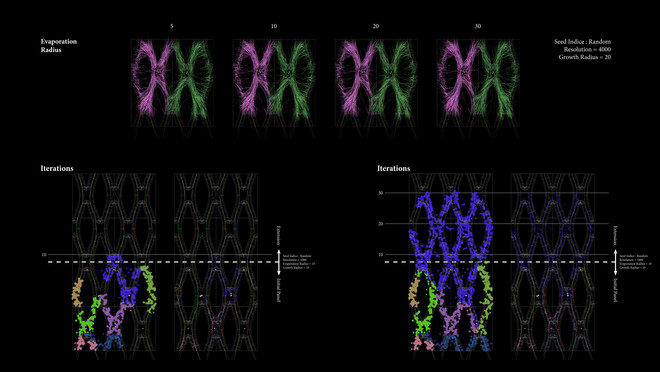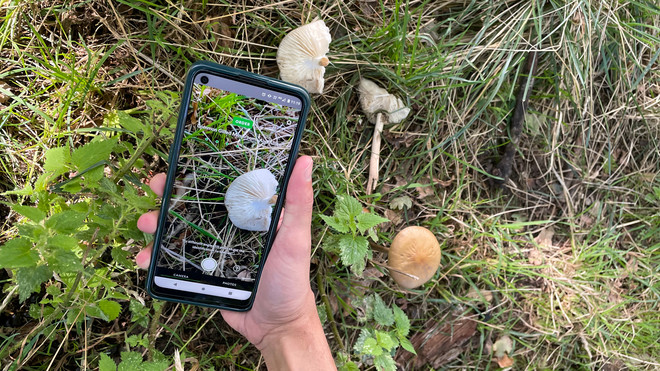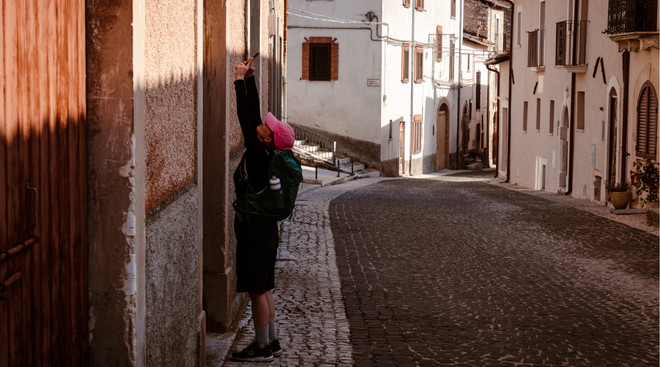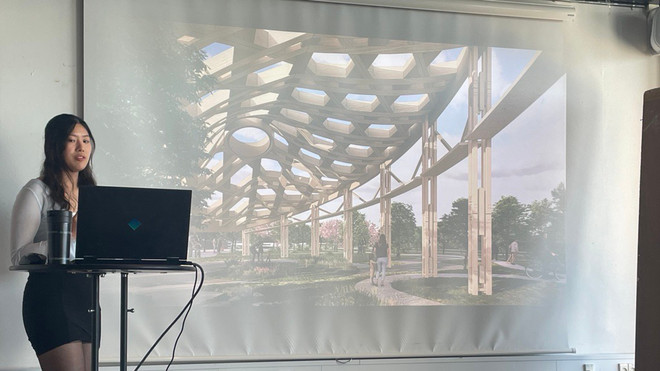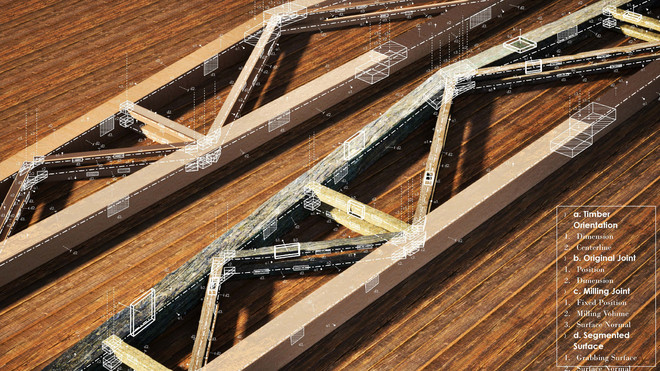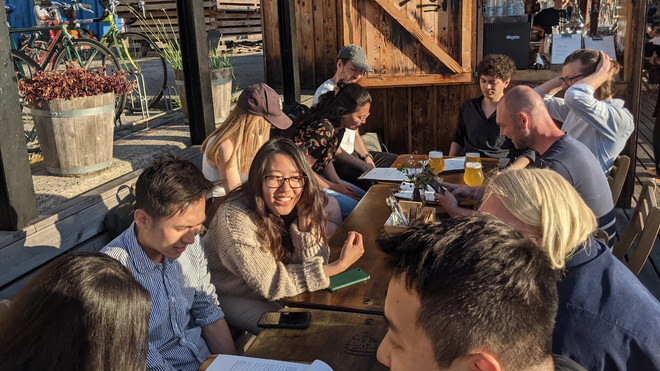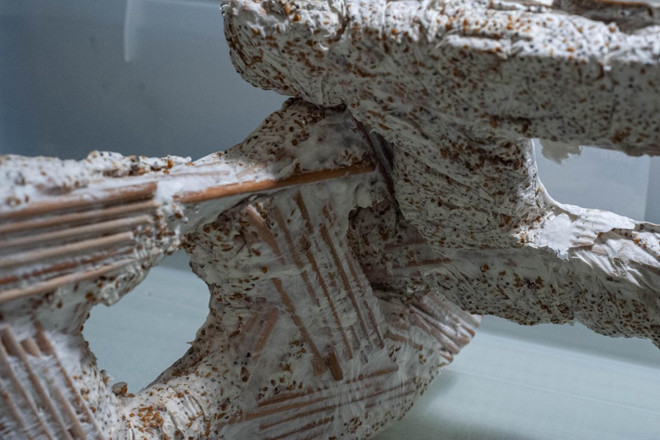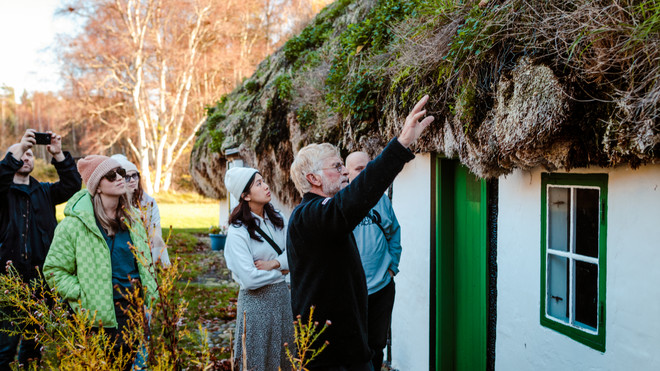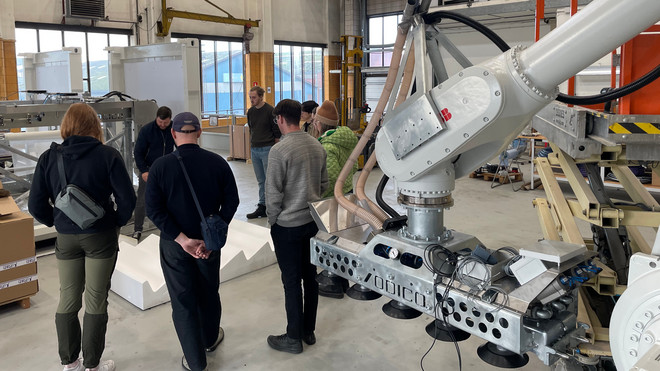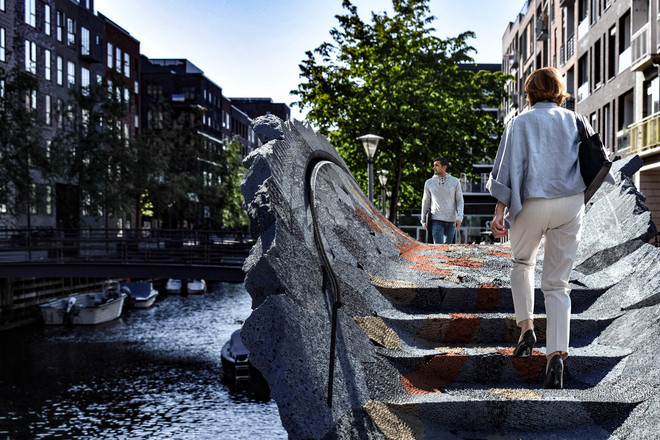
About the programme
The programme is part of the 2-year Master's programme at the Royal Danish Academy - Architecture. Read more about the programme's academic content and structure.
Computation in Architecture aims to question what it means to be a practicing architect in a time of urgent climate, resource and societal action, and to build research-led modes of design practice that prepare our students to lead the creation of innovative solutions. The programme is embedded within CITA: Centre for IT and Architecture, an internationally renowned innovative research centre. The masters intersects with CITA through personal tutoring of individual projects, workshop intensives and presentations from internationally leading researchers and practitioners, as well as through access to advanced facilities including the robotics and bio-labs.
Programme description
Programme description
The programme is structured around project-based experimentation and direct design engagement. These activities are supported by coursework that introduces core skills and multiple modes of applied and reflective enquiry. Courses in modelling and simulation introduce students to Grasshopper, Python and Life Cycle Assessment. Critical thinking is continuously developed through structured reading and discussion. Workshops and courses in digital fabrication introduce students to robotic fabrication, bio-design and materialisation practices.
We place particular emphasis on computation as an enabler of new ways of working with:
Resources
The shift away from an extractive and predatory use of resources, and towards their regenerative and sustainable use, requires new ways to understand the interdependency of materials and buildings: this includes the use of heterogenous biogenic materials, the optimisation of performance to minimize material use, the impacts of consumption and the creation of localised and circular built environments.
Students consider resources across the scales of landscape, building, element and material through attention to ecologies and timescales, modelling life cycles, and investigating strategies for recycling, repurposing and upcycling. They leverage the potential of computational techniques to develop processes of material grading, sorting and placing material stocks.
They explore the creation of open-source frameworks that gather and curate geospatial and ecological data to drive early-stage design decisions, guiding architects into preserving the biodiversity in the ecosystems they intervene in. By focusing on such issues, design perspectives develop carefully crafted relations that connect buildings and inhabitants to the ecosystems that host them as well as the specific resources they provide.
Living Materials
The emerging paradigm of Biodesign recasts our relationship to materials, challenging assumptions of how materials are made, how they perform and their role in our buildings, and our expectations of care, maintenance and lifespan.
Materials such as mycelia-, organic cellulose- and algae-based materials allow us to reconsider how we can grow structurally performing materials and harvest them for the built environment. The growth, architecture and steering of these materials, performed and monitored at the bio-lab, is a crucial step to consider. Sensing, modelling and fabricating then become interfaces for an exploration of the living, and opportunities to question the nature of a living architecture and how can it co-exist in sympoetic relationships with human inhabitation.
Students conduct material studies to devise new bio-composites and assess performances, tailoring them for digital fabrication processes including additive manufacturing, spraying or casting. Physical prototyping allows them to evaluate both material aspects and architectural potential. These investigations stretch beyond the use of biomaterials in building construction, to explore their use as tools for bioremediation and bioreceptivity.
Advanced Fabrication
Advanced fabrication techniques connect design to making, offering new ways of working with traditional materials as well as opening up the use of novel materials and materialisation processes.
Based on a direct dataflow between design software and manufacturing technology, robotic construction and additive/subtractive manufacturing democratise and decentralise the making process, give access to new ranges of formal complexity, and enable the bespoke fabrication of non-standard components.
Students leverage the precision of additive manufacturing to enhance technical performances, from structural capacities to natural ventilation and temperature regulation. They explore how robotic techniques of assembly can optimize the sequencing of components, and enable novel design for assembly/disassembly logics. More radically, they investigate how machines can learn and incorporate human collaboration.
Structure and Content
Structure and Content
At Computation in Architecture we develop group and personally directed design-led inquiries in which tight iterative cycles of hypothesis, testing, experimentation and reflection are conducted through production. An equal focus is put on representation and making - working with computation and directly through hands-on 1:1 material experiments.
Skills and knowledge are built continuously across the 4 semesters: In the first and third semester group-based work, courses and workshops focus on introducing key concepts and skilling-up through accelerated access to cutting edge fabrication technologies and live research projects. The second and third semesters provide the space to delve into deep personally led inquiry and directed skill development.
To support this process project-based experimentation is combined with other modes of reflective inquiry including writing, informed reading, verbal presentation and group discussion.
Computation in Architecture has a strong studio culture in which students work together on campus and across year levels. The studio is based at the heart of the campus with the CITA research centre and the dedicated digital fabrication workshop and bio-lab right next to them. This close proximity ensures easy exchange between collegiate and students.
At Computation in Architecture, you will:
- Develop a comprehensive and advanced knowledge of computational techniques, and their assumptions, abstractions, limits and opportunities within architectural design contexts
- Develop advanced and practical skills in applying fabrication technologies to support design investigation, prototyping and synthesis
- Develop personally directed research-informed architectural investigations that deploy digital design strategies to address architectural, material, structural, fabrication, programmatic and site-based issues and their impact on sustainability
At Computation in Architecture we value international experience and welcome applicants from all over the world. We accept national and EU students with a Bachelor in Architecture and international students with a Bachelor in Architecture and any further masters. We encourage interdisciplinary backgrounds. Each year we aim to build a diverse group of up to 20 participants.
Courses
Courses
Courses
Fundamentals of Computation 1 aims to provide a basic understanding of digital tools for computational design with a problem-solving approach where the students will learn to build and structure complex grasshopper definitions. How to approach complex tasks and hove to make robust definitions that generalise the problem at hand. Furthermore, the course aims to introduce computational thinking that can be useful when dealing with programming in general. By the end of the course, students will understand the fundamentals of computational design in architecture and be prepared to start using the tools in their own projects.
Tactics of Materialisation introduces students to the diversity of fabrication tools and techniques available at the school of architecture, and how making and modelling can be intertwined through techniques of digital sensing. It will focus on the shift from material to assembly, considering the additional interfaces required by the architectural element within a larger whole. The course will take place in the KADK Lab facilities and the CITA robot lab.
Productive Writing supports the development of the written assignment: an opportunity to deepen individual research interests and to strengthen students’ capacity to communicate clearly and concisely through writing. It covers how to introduce and frame a compelling architectural concern; describe the relevant research territories including their key concepts and the state of the art, describe a proposed methodology, detail initial experiments or investigations already made, and discuss preliminary results and architectural implications.
Thinking Architecture offers frameworks through which students may begin to conceptualize and critically reflect on cultures of computation in design and architecture. The course entails a series of sessions on the history of the field, accompanied by definitions and discussions of key notions within it as well as discussions of relevant readings.
Introduction to Life-Cycle Assessment aims to provide students with means of assessing the environmental impact of their design practice. A crucial tool to understand the impact of design and construction practices on the environment, the Life-Cycle Assessment (LCA) method is introduced by means of a theoretical course combined with a series of structuration, calculation and modeling exercices. A key part of the course is to explore and apply LCA principles relevant to each student’s semester design project.
CITAsessions introduces students to a broader community of digital practitioners at leading Danish offices. This series of scheduled visits to architectural practices provides a peak behind the curtain into their office culture and specific expertise in applying simulation and digital technologies to issues of sustainability and design.
Fundamentals of Computation 2 provides an advanced insight into architectural computing. The course covers computational geometry, geometric algorithms and data structures, and how they can be used to solve architectural design problems. Students are introduced to python programming, libraries, and good development and collaboration practices. With focus on the RhinoCommon platform, students will learn how to use it to create and manipulate 3D models, and how it can be integrated with other tools such Hops, Rhino.Inside and CPython.
Language
Language
Fluency in computational techniques is not a pre-requisite for joining the study group. Rather, we are interested in students with deep curiosity supported through commitment to learning and experimentation, that are intellectually ambitious and self-directed.
All teaching is in English









